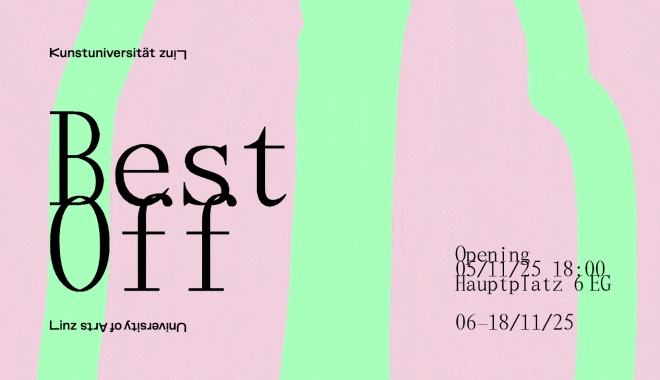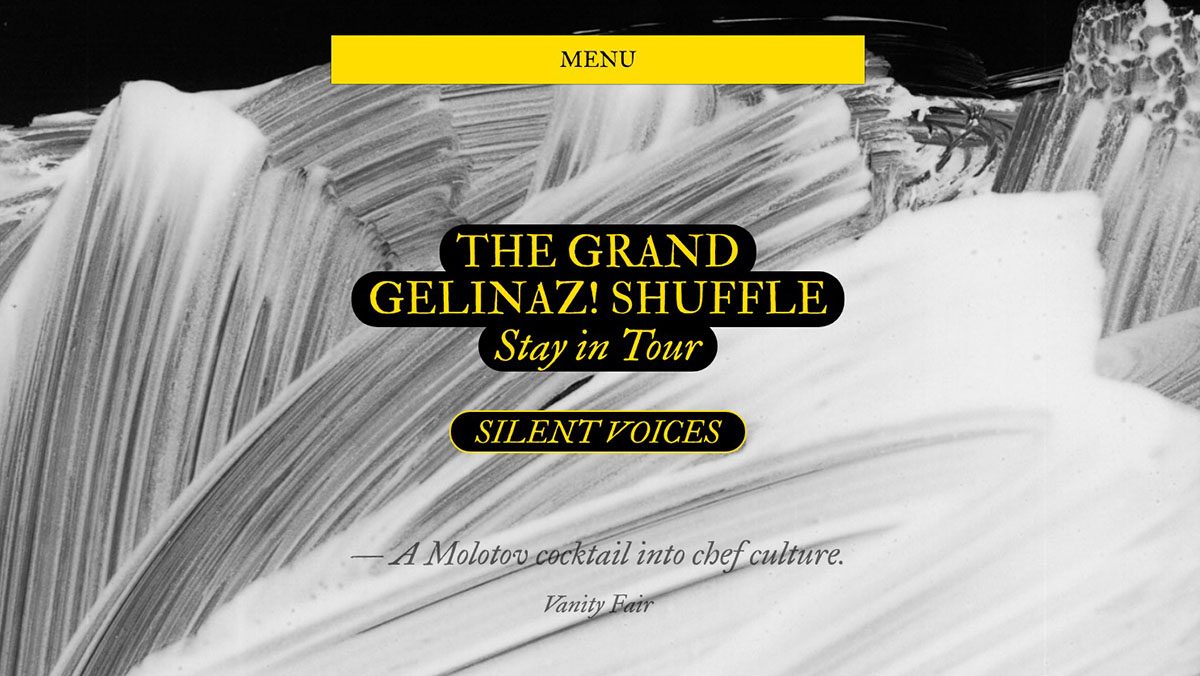A whopping 9 hours of performance in the Viennese Club “PRATER-STRASSE”. Each course remixed in a one hour DJ/Live Set on the dancefloor. New recipes created specifically for the event, with an airline flavor and a camping flair. Don’t expect too much, but as always with GELINAZ! expect the unexpected! All while abiding by the local health guidelines in place.
GELINAZ! is an international collective with over 300 chefs and 50 nationalities. Launched in 2005, its mission is to blast open new culinary expressions by pushing chefs out of their comfort zone. Performative events are created putting cooks on the brink of creativity overload, and immersing audiences in multi-sensorial experiences where food and art intertwine. In October 2020, after more than 15 editions, GELINAZ! launched its new project „Silent voices on tour“. This worldwide event paid tribute to the cooks and chefs that were hit hard by Covid. With no restaurants, no projects, no way to express themselves, we wanted to give them back their voices with the loudest dinner of all time! After 100% sold out events throughout Canada, Argentina, Brazil, Portugal, Thailand, India, Peru, Mexico and Taiwan, „Silent voices on tour“ was cock-blocked by the lockdowns and restaurant closures everywhere.
Back in Vienna and its food scene.
They have been here before, back in 2017 when GELINAZ! Does Upper Austria stirred things up with a few friends among whom: René Redzepi, Gabriela Camara, Mauro Colagreco, Manuella Buffara, David Chang, Ana Ros, Magnus Nilsson as well as Austrian chefs Milena Broger, Heinz Reitbauer, Lukas Nagel & Konstantin Filippou.
Austria is home to some of the most innovative and alternative chefs. What’s strange is that this avant-garde scene is still mostly under the radar. Something is really going on here. One needs to come see this. Andrea Petrini & Patricia Meunier, heads of the GELINAZ! Collective.
Who remixes who? Check your post-lockdown anxiety at the door, because on July 11th, GELINAZ! will give the food event a makeover.
Between Covid, which nailed down all the chefs at home, and the environmental crisis, which makes us all question the need to travel by plane, it felt obvious to rethink what an event should and could be, say the organizers.
No more chefs traveling half the globe for a dinner. The chefs keep their asses on the ground. From now on, the ones traveling are the menus, the recipes, the ideas. And once at their destination, they get remixed by local chefs. First stop, VIENNA. GELINAZ! recklessly chose THE HEALTHY BOY BAND to hoot the horn of this first event. The band is Philip Rachinger (Mühltalhof – Neufelden), Lukas Mraz (Mraz & Sohn **- Vienna) & Felix Schellhorn (Der Seehof – Goldegg), three peculiar individuals embracing “improvisation and anarchy”, burying fine dining under a camping tent with Airline food.
What? They will remix the Matrixes written by the SILENT VOICES, worldwide restaurateurs who shall remain anonymous until the last moment. If the food is too loud, you’re too old! Grab your knickerbockers, and don’t be afraid to get wet, as those ideal son-in-laws feed you with craziness.
When? July 11th 2021 (all day long) at Praterstrasse (Aspernbrücke 2, 1020 Vienna)
Booking & info: silentvoices.gelinaz.com




